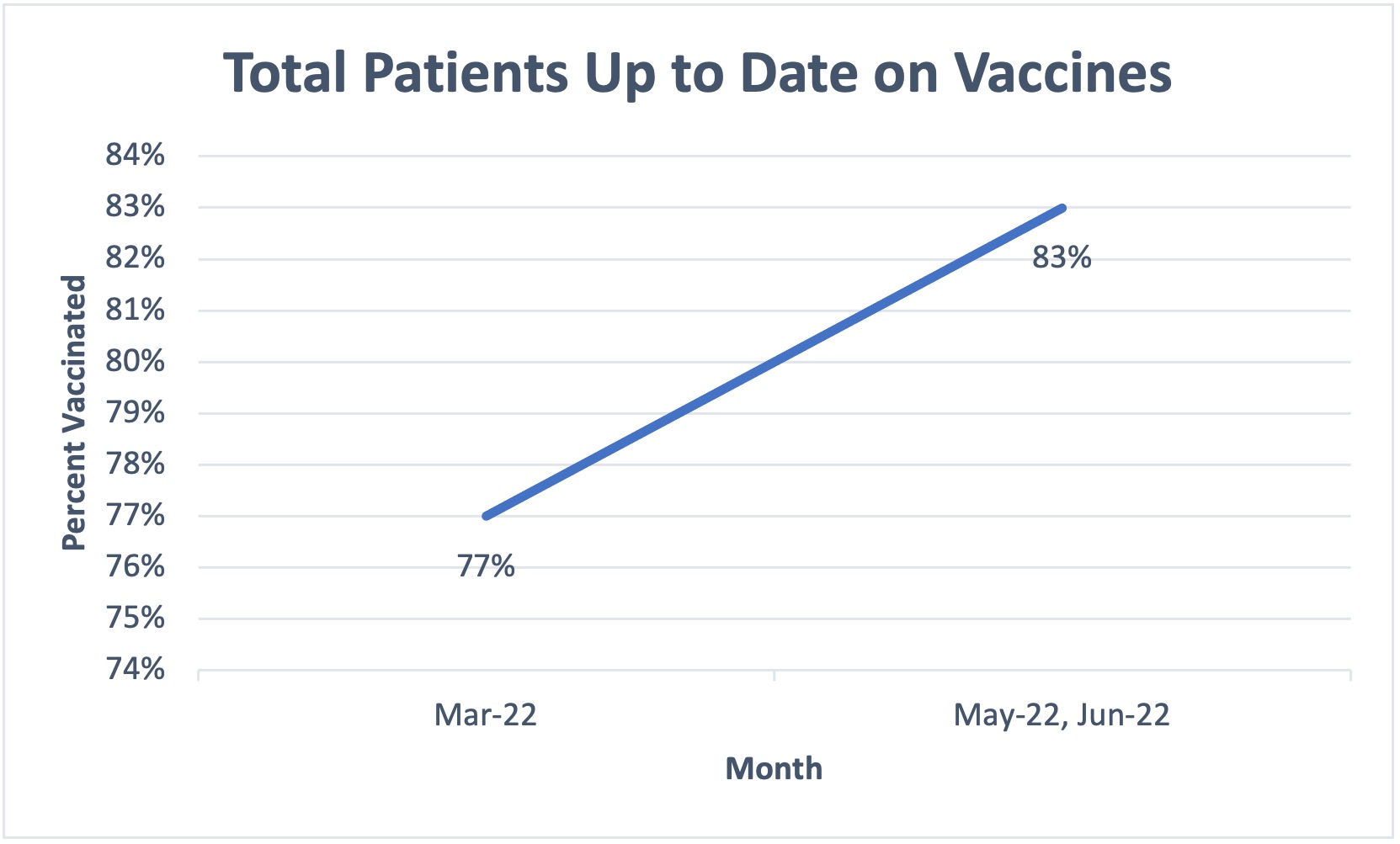Immunizations/Delivery
Immunizations/Delivery 2
435 - Identifying missed vaccines and improving vaccination rates at Baystate General Pediatrics
Publication Number: 435.323

Phanthila Singhaviranon, MD (she/her/hers)
General Pediatrician
Baystate Children's Hospital
East Longmeadow, Massachusetts, United States- CP
Cassandra Perry, DO (she/her/hers)
Baystate Children's Hospital
Windsor Locks, Connecticut, United States
Presenting Author(s)
First Author(s)
Background:
Childhood vaccines have been shown to save an estimated 2-3 million lives worldwide every year: it is a well-established fact that pediatric vaccines reduce the burden of disease morbidity and mortality, thereby improving short and long-term health outcomes for patients. They are also cost-effective by reducing medical expenses that may have been accrued from these diseases had they not been prevented. Children are recommended to be vaccinated against 16 different diseases throughout the course of childhood and adolescence. During the COVID-19 pandemic, it has become apparent that childhood vaccine rates overall worldwide have decreased. At Baystate General Pediatrics, rates were particularly low during March 2022.
Objective: Baystate General Pediatrics completed a quality improvement project to prevent missed vaccines due to provider misses and decreased amounts of in-person visits, in order to improve vaccine rates.
Design/Methods: Chart review was performed of immunization status and immunizations received for patients with in-person clinic visits and telephone contact pre-intervention and post-intervention. Interventions included providing awareness amongst providers to offer vaccines for patients even at sick visits, to schedule nurse visits for patients during episodes of phone contact, and to document vaccine refusals in patient charts. Missed opportunities for patients not up to date after clinic visits were noted.
Results:
Pre intervention in March 2022: Total chart review included 229 patients with 53 missed vaccination opportunities (23%). Interventions started in April 2022. Data collected thereafter in May and June 2022 included chart review of 359 patients with 64 missed vaccine opportunities (17%). This reflects an improvement from 77% to 83% total patients up to date on vaccines.
For adolescents, there was improvement in vaccine administration from 29% in March 2022 to 65% in May 2022 and to 69% in November 2022.
While reviewing data it was also discovered that a significant number of children not up to date on vaccines were behind due to aging out from eligibility to receive the rotavirus vaccination, as the maximum age at which the 3rd dose can be given is 8 months 0 days. Our clinic now obtains a monthly registry of 6 month old patients for tracking to make sure they are on schedule for completion of this series.
Conclusion(s):
Vaccines save lives. By intervening in clinic to remind providers to prioritize vaccine catch-up as we are seeing more patients in office as the pandemic evolves, we improved missed vaccine opportunities and will continue to strive for further improvement.
.jpg)

